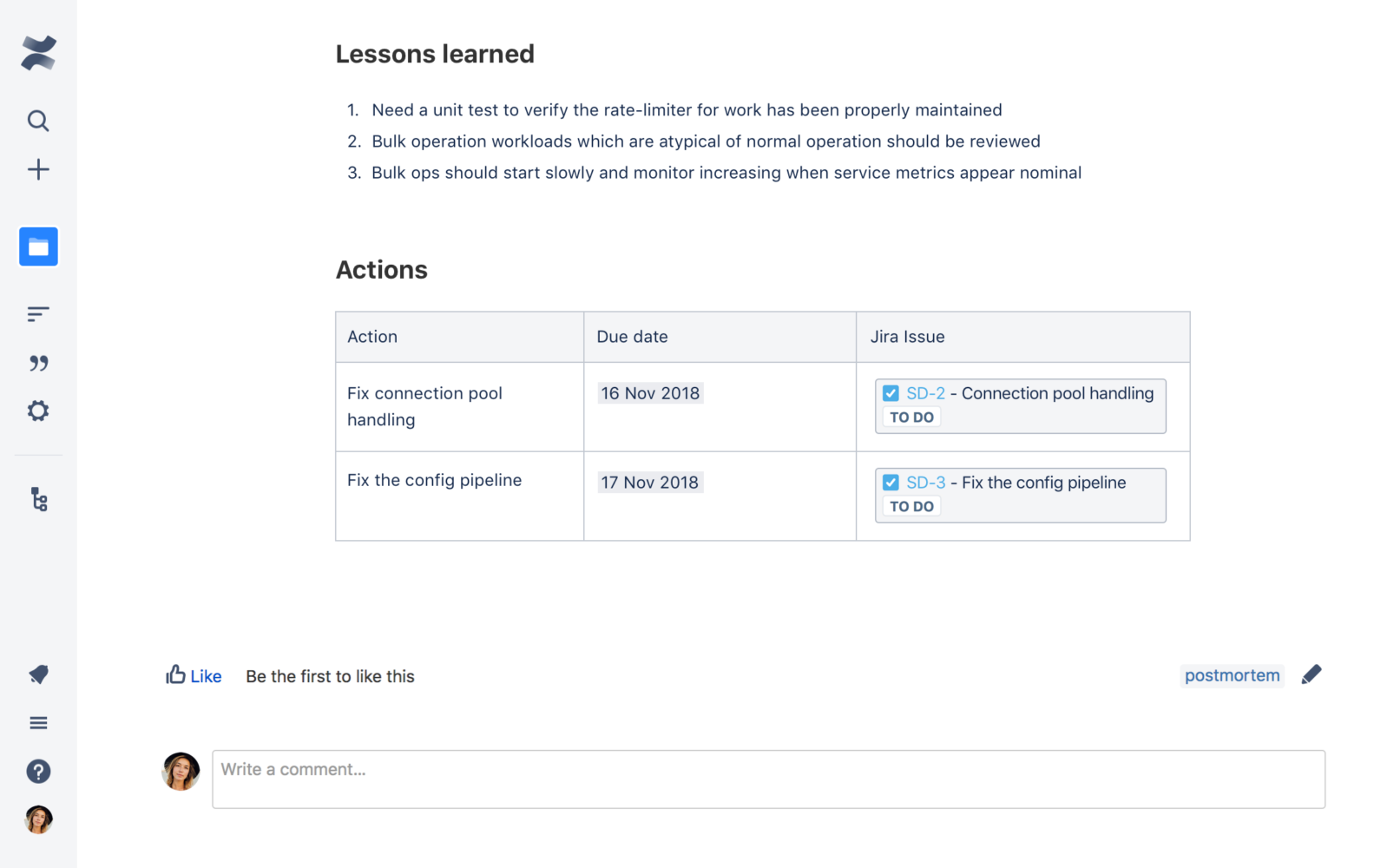Announcing postmortems for Jira Ops
Major incidents are inevitable, and fixing them is the top priority for any ops or DevOps team. But what happens after service is restored? Do teams take the time to fully understand what went wrong, then follow up to prevent it happening again?
The reality is that many teams today don’t. Incident postmortems are not completed or provide only a cursory analysis of the underlying causes. Without proper analysis and deep fixes, repeat incidents are common in our industry. Over 60% of teams in our Jira Ops evaluator survey said they’d like to improve their postmortem process, or how they learn from incidents.
This is why we’re excited to announce postmortems for Jira Ops, available today, as the best way to learn and improve from every incident.
Try it in Jira Ops
Never miss a postmortem
Teams typically prepare a postmortem document with a blameless discussion on the contributing factors behind the incident. But we know that manually creating the postmortem documentation can be a hassle and easy to forget.
In Jira Ops, you are immediately prompted to create a postmortem document on Confluence when your incident is resolved. By default, Jira Ops will create a new Incidents space and parent page in Confluence to collect all your postmortems in one place.
 The postmortem template contains the key areas that ensure all aspects of the incident are analyzed and understood:
The postmortem template contains the key areas that ensure all aspects of the incident are analyzed and understood:
- Summary – an overview of the incident, including key details copied from the Jira ticket
- Timeline – key events during the incident, using the Jira Ops timeline (more on this below)
- Analysis – covers each stage of the incident: lead-up, fault, customer impact, detection, response, recovery, and recurrence.
- Root causes – the underlying causes of the incident, often determined by a Five Whys exercise
- Lessons learned – what the team identified they should do differently next time
- Actions – links to remedial tasks in Jira, to address the root causes and lessons from this incident.
These sections are designed as prompts for your team to ensure you cover the key points of each incident and should be modified as needed. By default, every incident in Jira Ops requires a postmortem to help ensure your team never misses one. If you have a low severity incident and wish to skip the postmortem, you can do that from the incident list view or from the incident itself.
Get the full picture from the incident timeline
A key time-saver with Jira Ops postmortems is the incident timeline, which gathers all the key events from the incident in a single chronological list. In the past, without a way to easily gather the information from the different tools used during an incident, it would take teams hours to piece a comprehensive timeline together.
When you create a postmortem with Jira Ops, the incident timeline is automatically included as a macro in the postmortem Confluence page. The timeline provides exact timestamps for all the important events in the incident, like status changes, key Slack messages, Opsgenie alerts, Statuspage customer comms, and manual updates by the incident team.

Take action and improve from every incident
Once your team has analyzed what happened and got a clear picture of the root causes, it’s critical to track these tasks and ensure they’re done in a timely fashion.
After you’ve published your postmortem, you can create Jira issues directly from the Confluence page by selecting the text of each action and clicking the “Create Jira issue” button. These issues can be scheduled on your dev team backlog and reviewed to make sure they are completed.

Try Jira Ops today
With postmortems in Jira Ops, you can turn a manual, often-neglected process into a powerful force for learning and improving with every incident. You can read all about postmortems in the Jira Ops documentation and see it in action below.
To resolve incidents faster and eliminate repeat incidents, create your free early access account today.
